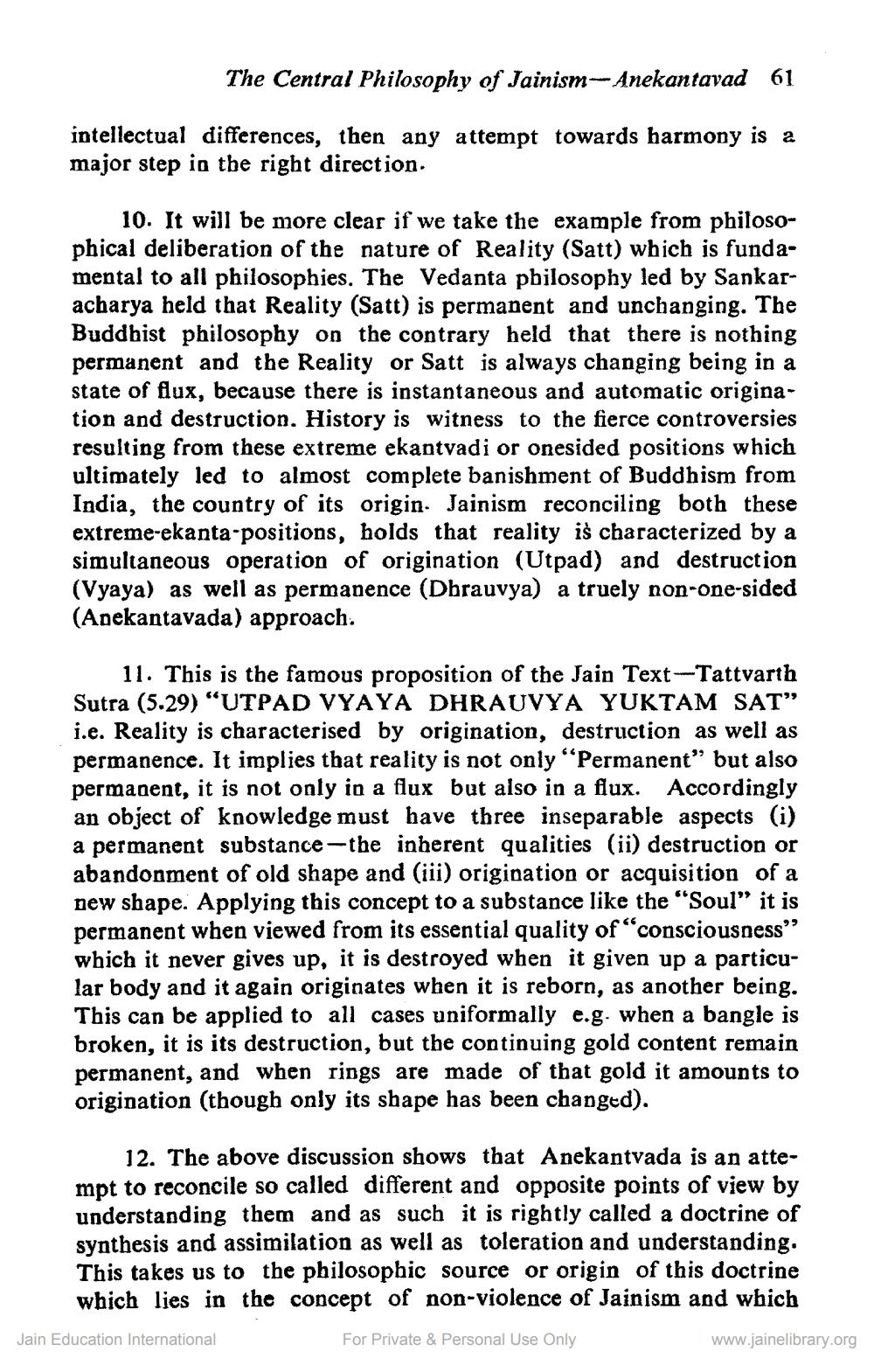________________
The Central Philosophy of Jainism-Anekantavad 61 intellectual differences, then any attempt towards harmony is a major step in the right direction.
10. It will be more clear if we take the example from philosophical deliberation of the nature of Reality (Satt) which is fundamental to all philosophies. The Vedanta philosophy led by Sankaracharya held that Reality (Satt) is permanent and unchanging. The Buddhist philosophy on the contrary held that there is nothing permanent and the Reality or Satt is always changing being in a state of flux, because there is instantaneous and automatic origination and destruction. History is witness to the fierce controversies resulting from these extreme ekantvadi or onesided positions which ultimately led to almost complete banishment of Buddhism from India, the country of its origin. Jainism reconciling both these extreme-ekanta-positions, holds that reality is characterized by a simultaneous operation of origination (Utpad) and destruction (Vyaya) as well as permanence (Dhrauvya) a truely non-one-sided (Anekantavada) approach.
11. This is the famous proposition of the Jain Text-Tattvarth Sutra (5.29) "UTPAD VYAYA DHRAUVYA YUKTAM SAT” i.e. Reality is characterised by origination, destruction as well as permanence. It implies that reality is not only "Permanent" but also permanent, it is not only in a flux but also in a flux. Accordingly an object of knowledge must have three inseparable aspects (i) a permanent substance the inherent qualities (ii) destruction or abandonment of old shape and (iii) origination or acquisition of a new shape. Applying this concept to a substance like the "Soul" it is permanent when viewed from its essential quality of "consciousness" which it never gives up, it is destroyed when it given up a particular body and it again originates when it is reborn, as another being. This can be applied to all cases uniformally e.g. when a bangle is broken, it is its destruction, but the continuing gold content remain permanent, and when rings are made of that gold it amounts to origination (though only its shape has been changed).
12. The above discussion shows that Anekantvada is an attempt to reconcile so called different and opposite points of view by understanding them and as such it is rightly called a doctrine of synthesis and assimilation as well as toleration and understanding. This takes us to the philosophic source or origin of this doctrine which lies in the concept of non-violence of Jainism and which For Private & Personal Use Only
Jain Education International
www.jainelibrary.org




